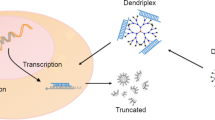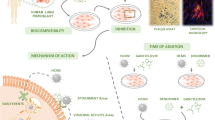Abstract
The development of new combinations to empower better protection against HIV infection is particularly important. Anionic polymers can block HIV infection. In the current study, first generation (G1) and second generation (G2) novel water-soluble anionic citrate-PEG-citrate dendrimers were synthesized and characterized with Fourier-transform infrared spectroscopy (FTIR), nuclear magnetic resonance spectroscopy (NMR), and dynamic light scattering (DLS) methods. After the biocompatibility of the G2 dendrimer was determined, its antiviral activity was evaluated. This function may contribute to the peripheral groups of this dendrimer (carboxylate group). In order to measure the inhibitory effect of G2 on HIV infection, both pre-treatment (treated with G2 dendrimer before HIV infection) and co-treatment (simultaneously treated with G2 dendrimer and HIV infection) were used in vitro. The results showed the good synthesis of the G2 dendrimer, and the dendrimer showed antiviral properties (ICC50:0.4 mM) and low toxicity (CC50:0.6 mM) at high concentrations. A strong inhibitory effect was found when the co-treatment approach was used. This study achieved promising results which encourage the use of G2 dendrimers as anti-HIV agents.






Similar content being viewed by others
References
Sargin F, Goktas S (2017) HIV prevalence among men who have sex with men in Istanbul. Int J Infect Dis 54:58–61
Vanpouille C, Arakelyan A, Margolis L (2012) Microbicides: still a long road to success. Trends Microbiol 20(8):369–375
Chonco L, Pion M, Vacas E, Rasines B, Maly M, Serramia M, Lopez-Fernandez L, De la Mata J, Alvarez S, Gomez R (2012) Carbosilane dendrimer nanotechnology outlines of the broad HIV blocker profile. J Controlled Release 161(3):949–958
Peng J, Wu Z, Qi X, Chen Y, Li X (2013) Dendrimers as potential therapeutic tools in HIV inhibition. Molecules 18(7):7912–7929
Kim PS, Read SW (2010) Nanotechnology and HIV: potential applications for treatment and prevention. Wiley Interdisciplinary Rev: Nanomed Nanobiotechnol 2(6):693–702
Silva N, Menacho F, Chorilli M (2012) Dendrimers as potential platform in nanotechnology-based drug delivery systems. IOSR J Pharm 2:23–30
Rupp R, Rosenthal SL, Stanberry LR (2007) VivaGel™(SPL7013 Gel): a candidate dendrimer–microbicide for the prevention of HIV and HSV infection. Int J Nanomed 2(4):561
Córdoba EV, Arnaiz E, Relloso M, Sánchez-Torres C, García F, Pérez-Álvarez L, Gómez R, Francisco J, Pion M, Muñoz-Fernández MÁ (2013) Development of sulphated and naphthylsulphonated carbosilane dendrimers as topical microbicides to prevent HIV-1 sexual transmission. AIDS 27(8):1219–1229
Aghasadeghi M, Zabihollahi R, Sadat S, Salehi M, Ashtiani S, Namazi R, Kashanizadeh N, Azadmanesh K (2013) Production and evaluation of immunologic characteristics of mzNLA-3, a non-infectious HIV-1 clone with a large deletion in the pol sequence. Mol Biol (Mosk) 47(2):258–266
Vacas-Córdoba E, Maly M, De la Mata FJ, Gómez R, Pion M, Muñoz-Fernández MÁ (2016) Antiviral mechanism of polyanionic carbosilane dendrimers against HIV-1. Int J Nanomed 11:1281
Ohki S, Arnold K, Srinivasakumar N, Flanagan T (1991) Effect of dextran sulfate on fusion of Sendai virus with human erythrocyte ghosts. Biomed Biochim Acta 50(2):199–206
Alavidjeh MS, Haririan I, Khorramizadeh MR, Ghane ZZ, Ardestani MS, Namazi H (2010) Anionic linear-globular dendrimers: biocompatible hybrid materials with potential uses in nanomedicine. J Mater Sci Mater Med 21(4):1121–1133
Dong X, Tian H, Chen L, Chen J, Chen X (2011) Biodegradable mPEG-b-P (MCC-g-OEI) copolymers for efficient gene delivery. J Controlled Release 152(1):135–142
Hajimahdi Z, Zabihollahi R, Aghasadeghi M, Ashtiani SH, Zarghi A (2016) Novel quinolone-3-carboxylic acid derivatives as anti-HIV-1 agents: design, synthesis, and biological activities. Med Chem Res 25(9):1861–1876
García-Gallego S, Díaz L, Jiménez JL, Gómez R, de la Mata FJ, Muñoz-Fernández M (2015) HIV-1 antiviral behavior of anionic PPI metallo-dendrimers with EDA core. Eur J Med Chem 98:139–148
Buckheit RW Jr, Watson KM, Morrow KM, Ham AS (2010) Development of topical microbicides to prevent the sexual transmission of HIV. Antiviral Res 85(1):142–158
Author information
Authors and Affiliations
Corresponding author
Rights and permissions
About this article
Cite this article
Kandi, M.R., Mohammadnejad, J., Shafiee Ardestani, M. et al. Inherent anti-HIV activity of biocompatible anionic citrate-PEG-citrate dendrimer. Mol Biol Rep 46, 143–149 (2019). https://doi.org/10.1007/s11033-018-4455-6
Received:
Accepted:
Published:
Issue Date:
DOI: https://doi.org/10.1007/s11033-018-4455-6




